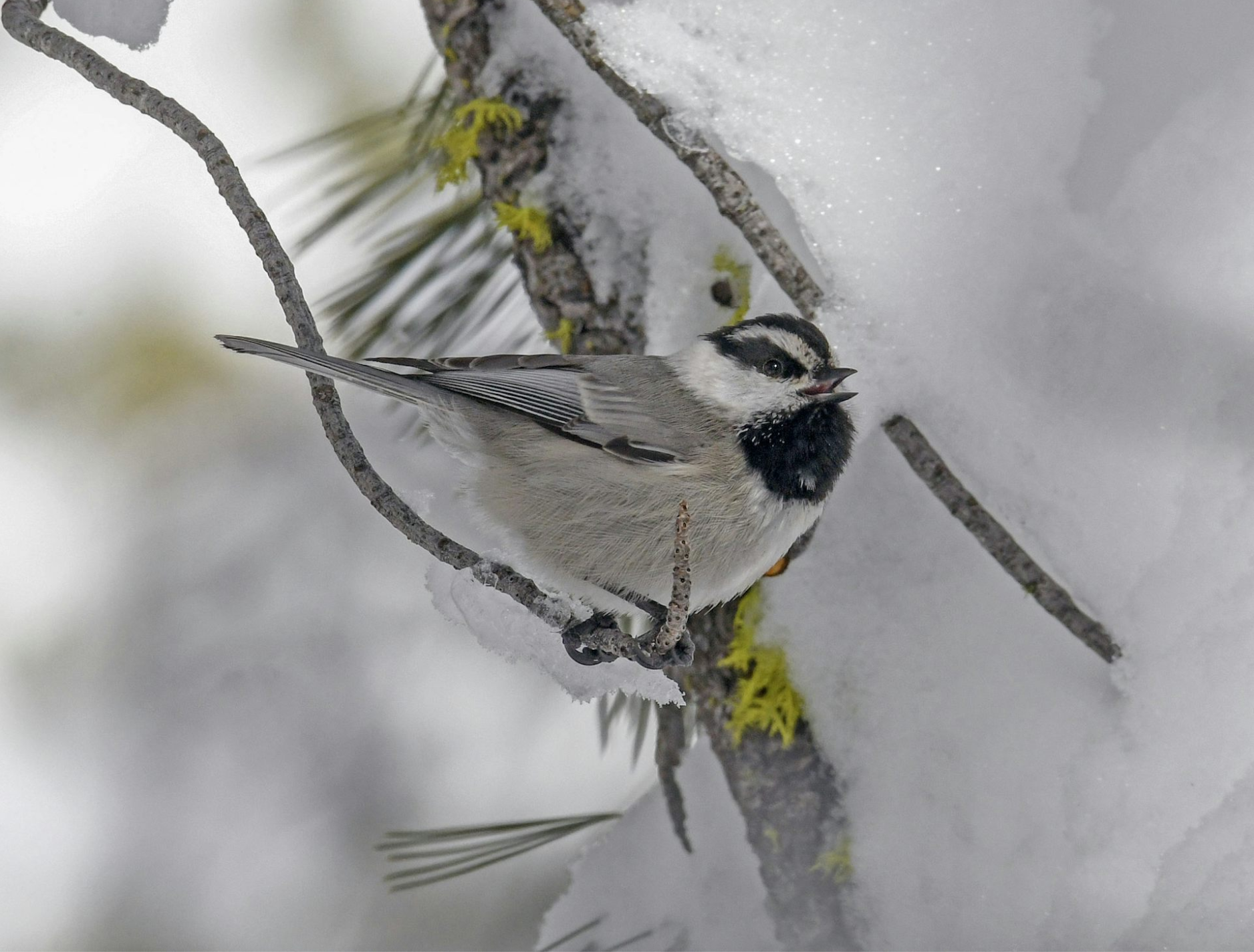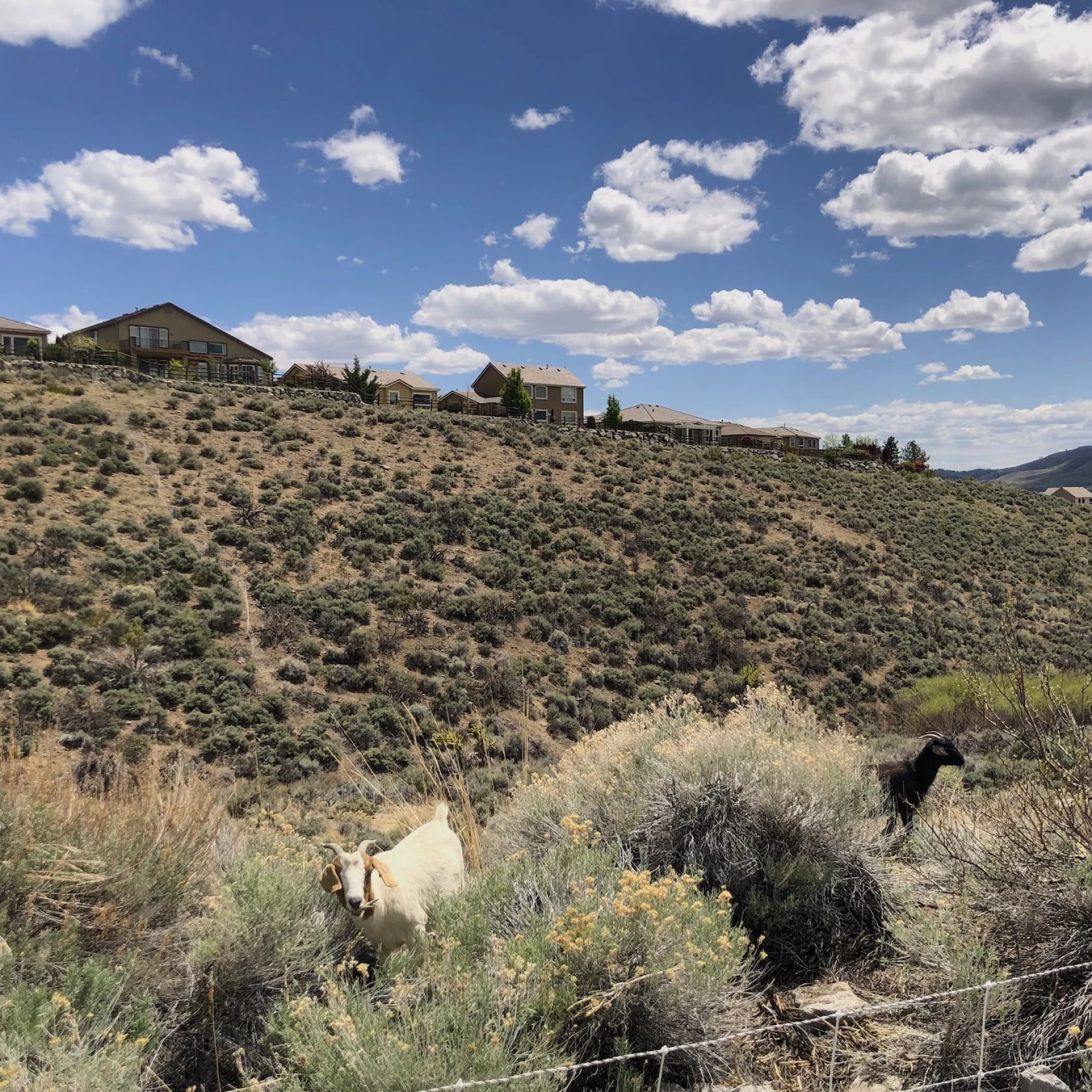This story was shared with permission from KUNR Public Radio. For an audio version of the story, please visit the KUNR website.
It’s a chilly February afternoon and I’m curled up under three feet of snow, in a small carved out hole. I’ve been here for about five minutes when I hear quick, light footsteps approaching – and then scratching, no digging, above me!
Just then, light and snow pour into my little cave as paws dig through the snow wall followed by a wet nose belonging to Griffin, the golden retriever and avalanche rescue dog.
My four-legged rescuer furiously digs until he reaches me and the tug toy I hold for this training exercise. He latches on and yanks relentlessly. Suddenly I’m dislodged from my snow cave and dragged into the blinding sunlight.
“Good boy Griff!” I yell as we play a ferocious game of tug-of-war – his reward for a job well done in this training exercise.

Griffin is one of four dogs on the Northstar Avalanche Rescue Dog Team. For him, this is an exciting game of chase and tug-of-war, but for those he may find in the snow it is so much more.
Ski Patroller Malea Jordan has been Griffin’s handler for the past year. She said the dogs are very important, one of the many tools they use in search and rescue.
“If you are involved in any sort of an avalanche where you’re not wearing a beacon and you’re buried under the snow, your best bet of being found is with a dog,” Jordan said.
An avalanche beacon sends out signals that help rescuers locate an individual buried in the snow. But if someone is not wearing one, dogs could help sniff them out.
Northstar is not the only resort in the Tahoe region with an avalanche dog team. Many resorts have them, including Palisades Tahoe which has an eight dog team.

Dogs have been an important tool in the Tahoe Basin since the 80s, said Ben Stone, the avalanche dog coordinator at Palisades Tahoe. He is also the president of the Placer County Sheriff’s Tahoe dog team.
“So our dogs are trained to find human scent under the snow,” Stone said. “If you and I are standing on top of the snow, they know that that’s not what they’re looking for. They’re looking for something that’s buried and that they have to dig up.”
Dogs were deployed to the recent avalanche at Palisades Tahoe where one person died. Although they are an incredible tool, a lot factors into avalanche survivability and dogs are not a guarantee for finding buried victims alive.

According to the American Avalanche Association, if a victim is found within 15 minutes their chance of survival is 93 percent, but it drops by three percent every minute after this. After 35 minutes there is only a 37 percent chance of survival.
“The outcome we’re looking for is always to rescue someone, and that’s why we have these dogs,” said Stone. “To them, there’s no differentiation between the real thing and training – it’s all just a fun game for them. My dog thinks the helicopter is a giant flying truck.”
A lot of the avalanches he and his dog Ahsoka, a three-year-old Belgian malinois, are deployed to are in the backcountry with the Placer County Sheriff’s Dog Team.

“We work our dogs on the site, and we can clear that site pretty quickly with a dog’s nose. They can do the work of a lot of humans in a really short amount of time,” Stone said.
A lot of effort goes into training the dogs to hone and maintain their skills. Training starts when dogs are as young as eight weeks old and often takes up to two years before the dog is ready to test for certification, he said.
One of the first things a dog learns is to find people through a simple game of hide and seek called “runaways”.
At Northstar, Jordan was training the newest member of the dog team, a 10-week-old English shepherd named Ripp, using this technique.
She taunted him with a toy and then ran away. Ripp was able to see where she went but was held back. Then he was given the command “Search!” and he broke away chasing after her. His reward for finding her? A game of tug of war.
As Ripp advances, this game will get progressively harder and he’ll learn to look for people not just hiding behind a tree or in another room, but buried in the snow.

Ski patrol will dig snow caves, like the one I was buried in, and eventually Ripp will be able to sniff out a person buried more than five feet beneath the snow.
The dogs work hard, and patrollers do a lot to keep their dogs safe and healthy. They often ski them down on their shoulders or between their legs to reduce wear on their joints and to protect them from sharp ski edges, which could cause career-ending cuts to the dogs.
“My biggest piece of advice is to treat the dogs like a working dog and ask before you approach them,” Jordan said. “But other than that, they’re usually hanging around the ski patrol bumps and they’d love to meet you.”
Kat Fulwider is the 2024 spring intern for KUNR and the Hitchcock Project for Visualizing Science.






